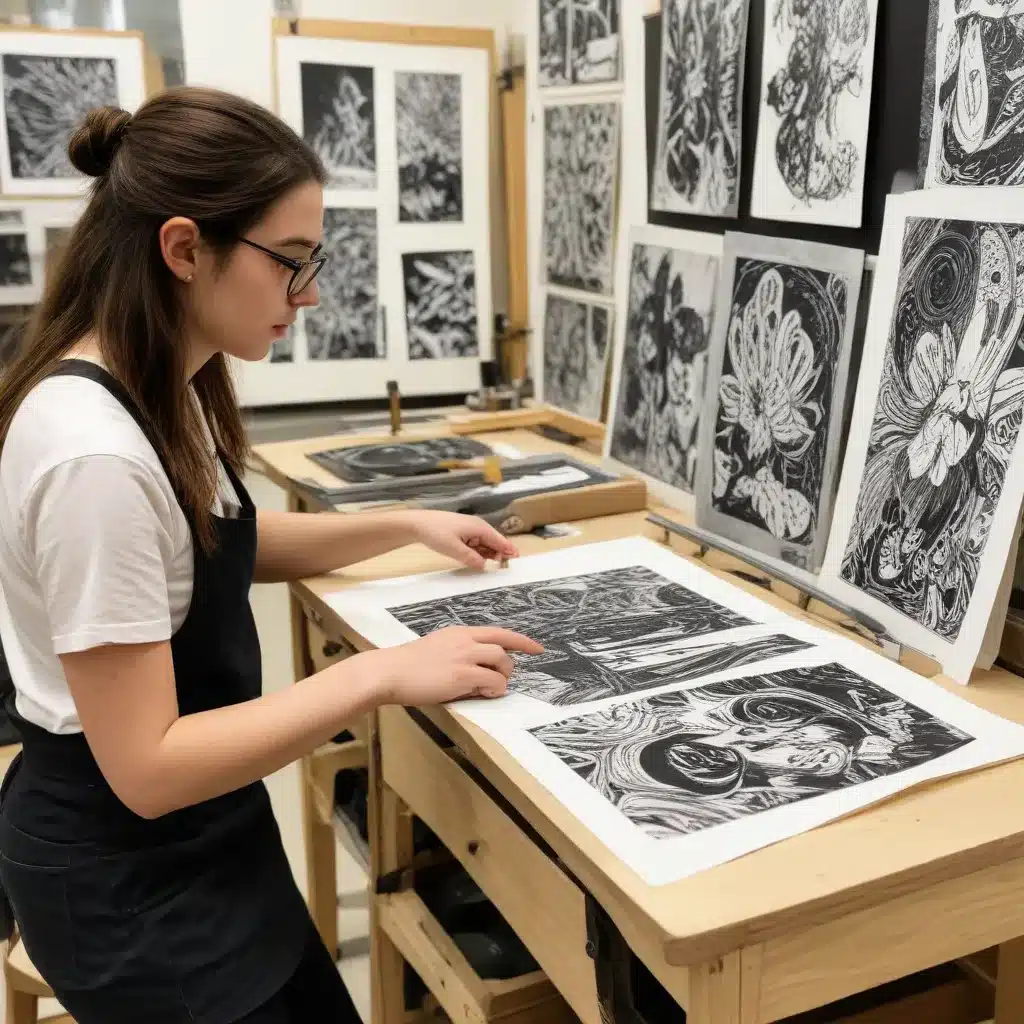
Introduction to Printmaking
Printmaking is a captivating art form that allows artists to create multiple, identical images. From the intricate detail of etchings to the bold, expressive qualities of linocuts, the diverse techniques of printmaking offer endless possibilities for creative expression. As an educational institution focused on nurturing young artistic talents, Stanley Park High School is thrilled to provide our students with the opportunity to explore the vibrant world of printmaking.
In this comprehensive guide, we’ll take you on a journey through the exciting realm of printmaking. You’ll discover the various printmaking techniques, learn about the printmaking process, and witness a student-led printmaking demonstration that showcases the creativity and skill of our talented art students.
Printmaking Techniques
Printmaking encompasses a wide range of techniques, each with its unique characteristics and artistic potential. Let’s dive into some of the most popular printmaking methods:
Intaglio Printmaking
Intaglio printmaking involves incising or etching lines or textures into a metal plate, usually made of copper or zinc. The recessed areas hold the ink, which is then transferred onto paper through the application of pressure. This process allows for the creation of intricate, detailed prints with a distinctive, velvety texture.
Relief Printmaking
In relief printmaking, the artist carves or cuts away the negative space around a design or image, leaving the raised areas to hold the ink. This technique, exemplified by linocuts and woodcuts, produces bold, graphic prints with a strong contrast between the printed and unprinted areas.
Planographic Printmaking
Planographic printmaking, such as lithography and monotyping, utilizes the principle of oil and water repelling each other. The artist creates a design on a flat surface, like a stone or metal plate, and the ink adheres only to the drawn or painted areas, resulting in a unique, expressive print.
Screenprinting
Screenprinting, also known as silkscreening, involves forcing ink through a mesh screen onto a surface. The artist creates a stencil on the screen, allowing the ink to pass through the open areas and create a distinct, vibrant image.
The Printmaking Process
Regardless of the specific technique, the printmaking process generally follows a similar sequence of steps:
- Plate Preparation: The artist creates or prepares the surface that will hold the ink, such as a metal plate, wood block, or lithographic stone.
- Image Creation: The artist then creates the desired image or design on the plate, using various tools and techniques like etching, carving, or drawing.
- Inking: The plate is inked, with the ink filling the recessed or raised areas, depending on the printmaking method.
- Paper Preparation: The artist selects and prepares the paper or other surface that will receive the printed image.
- Printing: The inked plate is then pressed against the paper, transferring the image onto the surface.
- Edition Creation: Depending on the technique, the artist can create multiple, identical prints, known as an edition.
Student Printmaking Demonstration
Now, let’s witness the artistic process in action as we observe a student-led printmaking demonstration at Stanley Park High School. Our talented art students will guide you through the creation of a linocut print, showcasing the skill and creativity that are hallmarks of our school’s art program.
Linocut Printmaking
Linocut printmaking is a popular relief printing technique that involves carving a design into a linoleum block. Our students will take you through the step-by-step process of creating a linocut print:
-
Design Development: The students begin by sketching and refining their desired image or design on paper. They consider the composition, positive and negative spaces, and how the design will translate into a printable format.
-
Carving the Linoleum: Using specialized carving tools, the students carefully carve away the negative space around their design, leaving the raised areas that will hold the ink.
-
Inking the Linoleum: The students apply a thin, even layer of ink to the carved linoleum block, ensuring that the ink fills the recessed areas.
-
Printing the Image: The students place a sheet of paper over the inked linoleum and apply pressure, either by hand or with a printing press, to transfer the image onto the paper.
-
Printing the Edition: Depending on the desired number of prints, the students can repeat the inking and printing process to create a consistent edition of their linocut design.
Throughout the demonstration, our students will share their insights, challenges, and creative inspirations, providing you with a behind-the-scenes look at the printmaking process. This hands-on experience will showcase the dedication, talent, and innovative spirit of our art students at Stanley Park High School.
Exploring the Art of Printmaking
Printmaking is a dynamic and versatile art form that has captivated artists for centuries. From the intricate details of etchings to the bold, expressive qualities of linocuts, the diverse techniques of printmaking offer endless opportunities for creative expression.
At Stanley Park High School, we are committed to nurturing the artistic talents of our students and providing them with the resources and guidance to explore the exciting world of printmaking. Through our comprehensive art program and student-led demonstrations, we aim to inspire and empower the next generation of printmakers.
We invite you to visit our school’s website to learn more about our art department and the various opportunities available for students to engage with the visual arts. Whether you’re a student, parent, or a member of the community, we welcome you to join us on this journey of artistic discovery and exploration.

